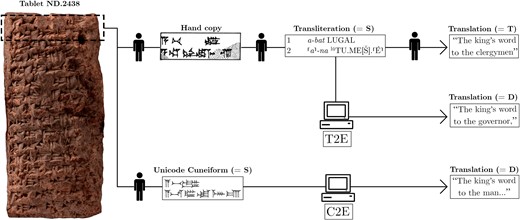Artificial intelligence (AI) is rapidly transforming the electric vehicle (EV) industry. From design and manufacturing to autonomous driving and charging infrastructure, AI is poised to revolutionize the way we develop, build, and use EVs.
This article will explore some of the key ways that AI is disrupting the EV industry, and discuss the potential implications of these changes for consumers, businesses, and the environment.
Design and Manufacturing
AI is already being used to design and manufacture EVs more efficiently and effectively. For example, AI-powered algorithms can be used to:
- Optimize battery design for energy density, range, and cost.
- Reduce production costs by automating tasks and optimizing supply chains.
- Improve vehicle performance by designing more efficient motors, powertrains, and aerodynamics.
For example, Tesla uses AI to design and manufacture its batteries. AI helps Tesla to optimize the battery chemistry and structure to get the most energy density and range out of its batteries. AI also helps Tesla to automate the battery manufacturing process, which reduces costs and improves quality.
Another example is the company Waymo, which is developing self-driving cars. Waymo uses AI to design and manufacture its own self-driving hardware and software. This allows Waymo to have greater control over the development and deployment of its self-driving cars.
Autonomous Driving
AI is also playing a major role in the development of autonomous EVs. Self-driving cars rely on AI to perceive their surroundings, make decisions, and control the vehicle.
AI-powered self-driving car systems use a variety of sensors, such as cameras, radar, and ultrasonic sensors, to create a real-time 3D model of the car's surroundings. This model is used to identify other vehicles, pedestrians, and objects on the road. AI then uses this information to make decisions about how to safely navigate the vehicle.
Several companies are developing autonomous EVs, including Tesla, Waymo, and Cruise. These companies are using AI to develop self-driving cars that can operate safely and reliably in a variety of environments.
Charging Infrastructure
AI is also being used to improve EV charging infrastructure. For example, AI can be used to:
- Optimize the placement of charging stations based on traffic patterns and population density.
- Predict demand for charging and allocate resources accordingly.
- Manage the charging grid to ensure that there is enough power to meet demand.
For example, the company ChargePoint uses AI to optimize the placement of its charging stations. ChargePoint uses AI to analyze data on traffic patterns, population density, and vehicle registrations to identify the best locations for new charging stations. This helps to ensure that charging stations are placed where they are most needed.
Another example is the company GridX, which provides AI-powered software solutions for managing the electric grid. GridX's software helps utilities to optimize power generation and distribution, integrate renewable energy sources, and manage demand response programs. This can help to make the electric grid more efficient and reliable, which is essential for supporting the growth of EVs.
Other Applications of AI in the EV Industry
In addition to the key areas discussed above, AI is also being used in a variety of other ways to disrupt the EV industry. For example, AI is being used to:
- Develop new battery technologies with higher energy density and longer lifespans.
- Improve the efficiency of EV motors and powertrains.
- Develop new EV charging systems that are faster and more convenient to use.
- Develop new EV safety features, such as collision avoidance systems and driver monitoring systems.
- Create new EV insurance products and services that are tailored to the unique needs of EV owners.
Implications of AI for the EV Industry
The widespread adoption of AI in the EV industry is expected to have a number of significant implications for consumers, businesses, and the environment.
For consumers, AI is expected to make EVs more affordable, accessible, and user-friendly. For example, AI-powered battery technologies and EV charging systems could help to reduce the cost of EVs and make them more convenient to charge. AI-powered self-driving cars could also make EVs more accessible to people with disabilities and other mobility challenges.
For businesses, AI is expected to create new opportunities for innovation and growth. For example, companies that develop AI-powered EV technologies and services could position themselves well to capitalize on the growing EV market.
For the environment, AI is expected to help reduce greenhouse gas emissions and improve air quality. For example, AI-powered EV charging systems could help to make the electric grid more efficient and reliable, which could support the integration of more renewable energy sources. AI-powered EV safety features could also help to reduce traffic accidents and fatalities.
Overall, the widespread adoption of AI in the EV industry is expected to have a number of positive implications for consumers, businesses, and the environment.
Challenges and Opportunities
While AI has the potential to transform the EV industry in many positive ways, there are also some challenges that need to be addressed. One challenge is the development of ethical guidelines for the use of AI in EVs. For example, it is important to ensure that AI-powered self-driving cars are programmed to make decisions that are consistent with human values, such as protecting life and minimizing harm.
Another challenge is the need to ensure that AI-powered EV technologies and services are accessible to everyone. For example, it is important to develop affordable AI-powered EV charging systems and self-driving cars. It is also important to ensure that AI-powered EV technologies and services are designed to meet the needs of people with disabilities and other minority groups.
Despite the challenges, AI presents a number of significant opportunities for the EV industry. By embracing AI, the EV industry can become more innovative, efficient, and sustainable. AI can also help to make EVs more affordable and accessible to everyone, which could accelerate the transition to a clean energy economy.
Conclusion
The EV industry is at a crossroads. AI has the potential to transform the EV industry in many positive ways, but it is important to address the challenges and opportunities associated with AI adoption. By working together, consumers, businesses, and policymakers can ensure that AI is used to create a more sustainable and equitable EV industry.











